Doughrising bowl with warmer DELÍCIA ¤26cm YouTube
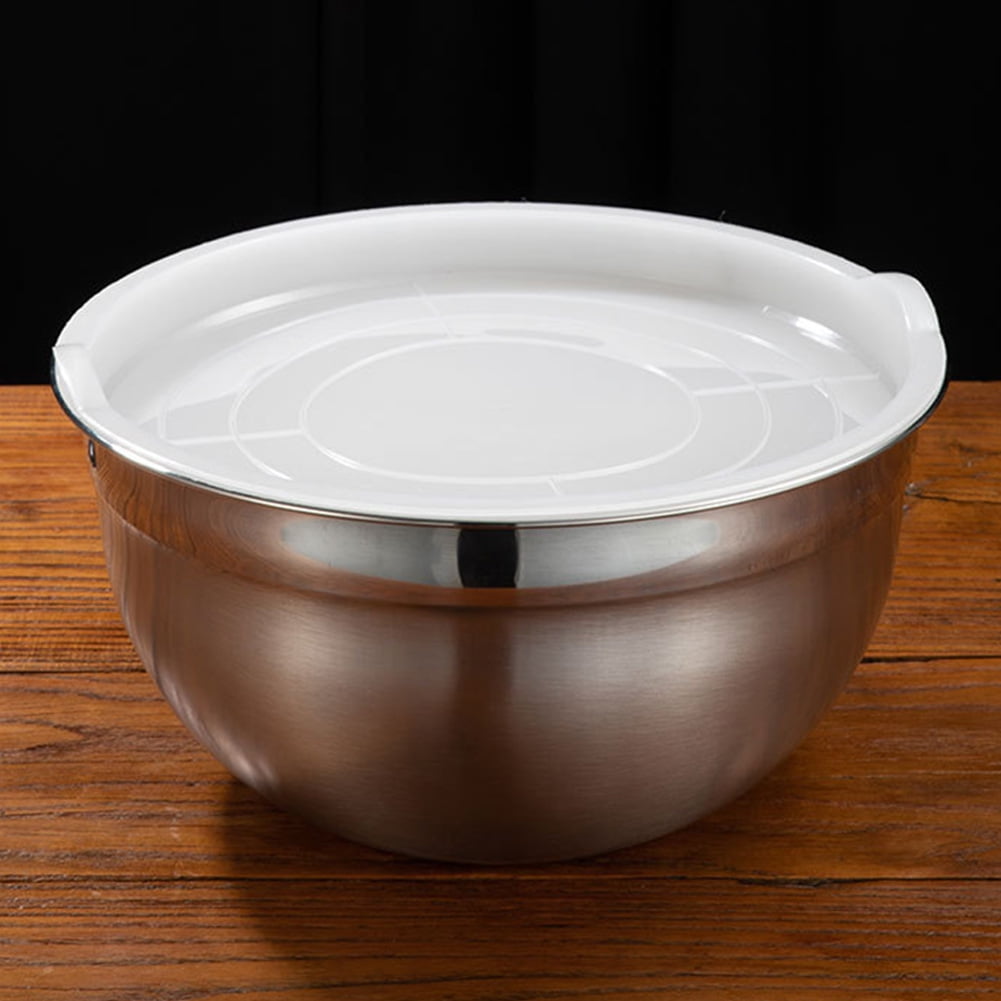
Thicken Stainless Steel Mixing Bowl + Lid Set for Beat Eggs Knead Dough
A deep and narrow bowl might seem like a good choice at first, but it can actually hinder the rising process. This is because the dough will be compressed against the sides of the bowl, preventing it from expanding properly. A wide and shallow bowl, on the other hand, allows the dough to spread out and rise evenly.

Rising dough in a bowl — Photo — Lightstock
How to make pizza dough using a stand mixer. Dissolve sugar in lukewarm water and bloom your yeast in a bowl. Mix the flour and salt in a stand mixer bowl. Add the yeast mixture (wet ingredients) to the flour mixture (dry ingredients). Let the stand mixer knead the dough until it comes together and the surface appears to be smooth.

Delicia DoughRising Bowl With Warmer, 26cm BrandAlley
It is best to use stainless steel or plastic bowls since they retain heat better and allow a slightly faster proof while tall plastic dough-rising buckets are best for measuring when the dough has doubled. It does not matter if the bowl is made of plastic, stainless steel, ceramic, glass, or even wood, dough can still rise there.
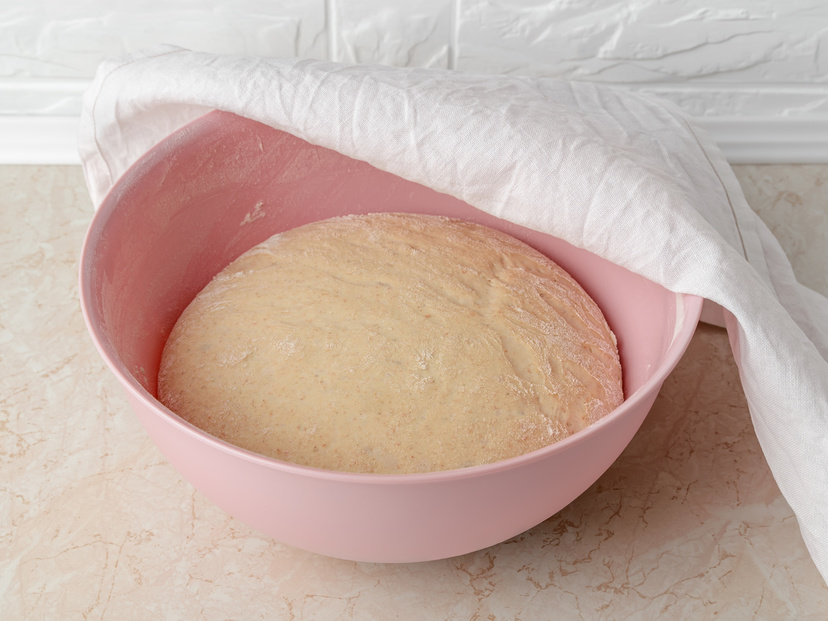
【してから】 パン発酵機 います
The best type of bowl for dough to rise is a large, non-reactive bowl made of glass or ceramic. These materials retain heat well and will keep the dough warm during the rising process. It is also important to choose a bowl that is big enough to allow the dough to double in size without overflowing. A bowl with a smooth surface is ideal, as it.

Closeup of Dough Rising in a Bowl Stock Image Image of homemade
The perfect container for your rising bread dough. This sturdy, commercial-grade stackable bucket will keep your dough at a consistent temperature for an even rise. Put your dough inside (see our tips), and make a note of its height with the handy volume markings on the side. You'll know at a glance when the dough is doubled.
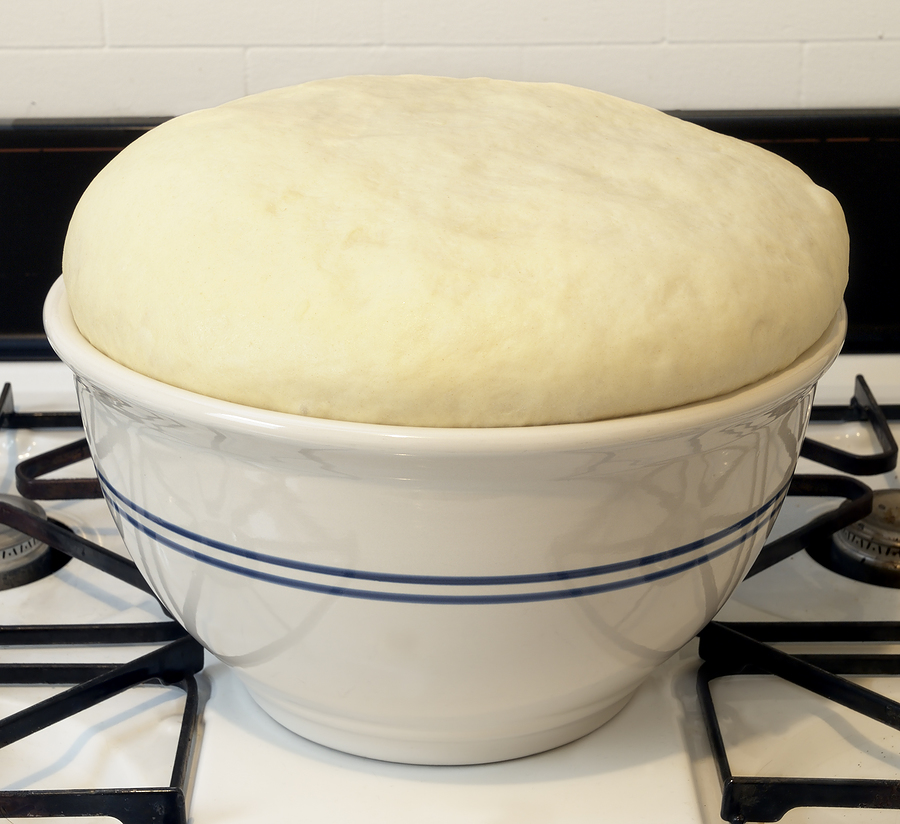
Yeasted Foods Dr Bill Dean
Place your covered bowl with the dough on the other side of the oven and close the door while the dough rises. On lowest oven temperature to preheat: Turn the oven to the lowest oven temperature for about 2 minutes. Then turn off the oven, open the door and add the dough (in a covered glass bowl). This will be a cozy spot for your dough to rise.
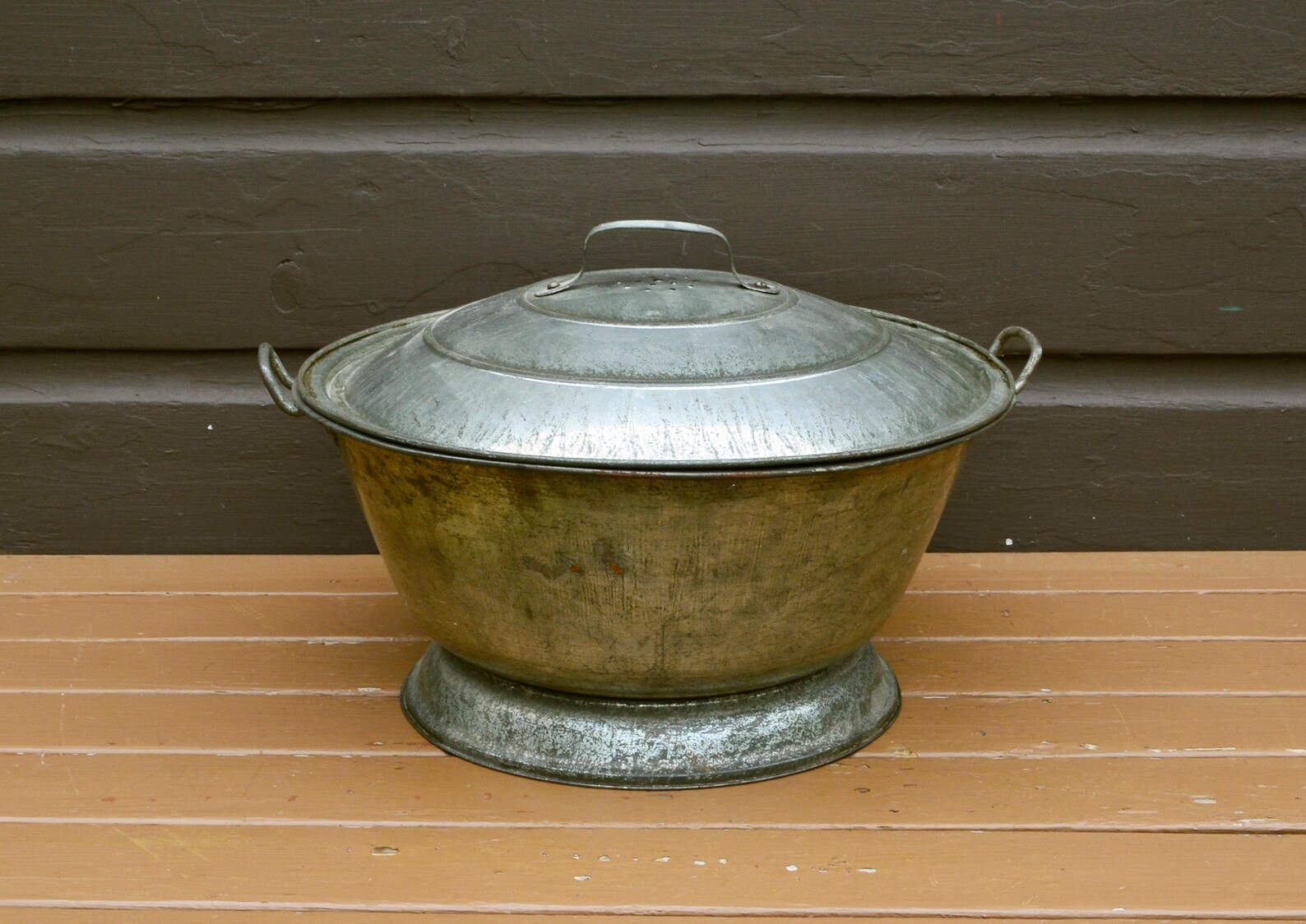
Tin Dough Bowl Antique Dough Rising Bowl Large Covered Bread Etsy
A mixer bowl is ideal for mixing ingredients together. It is designed to mix dry ingredients such as flour and sugar into liquids such as milk and eggs. It does not allow air to get into the mixture. This prevents the dough from rising properly. Mixing bowls are usually made of glass or plastic.
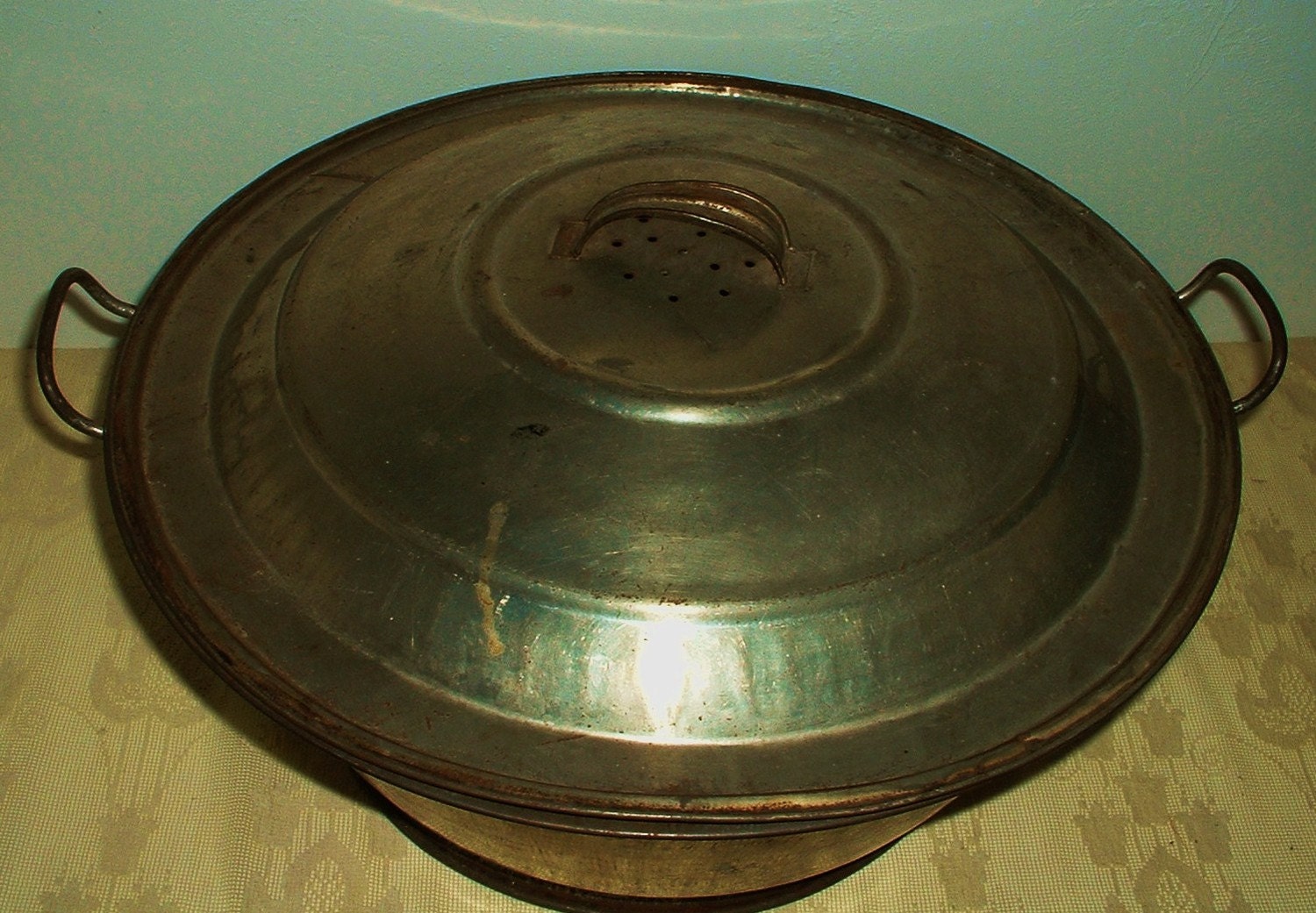
Antique Metal Dough Rising Pan Bowl with Lid HUGE and VERY
Scrape dough out of bowl on work surface lightly dusted with flour. Shape into log, fully deflating dough in the process. Cut into 3 equal portions (330g / 11.6 oz each) - one for each pizza base. For each dough portion, shape into a ball, tuck the sides under, money-bag style, so you have a smooth surface.
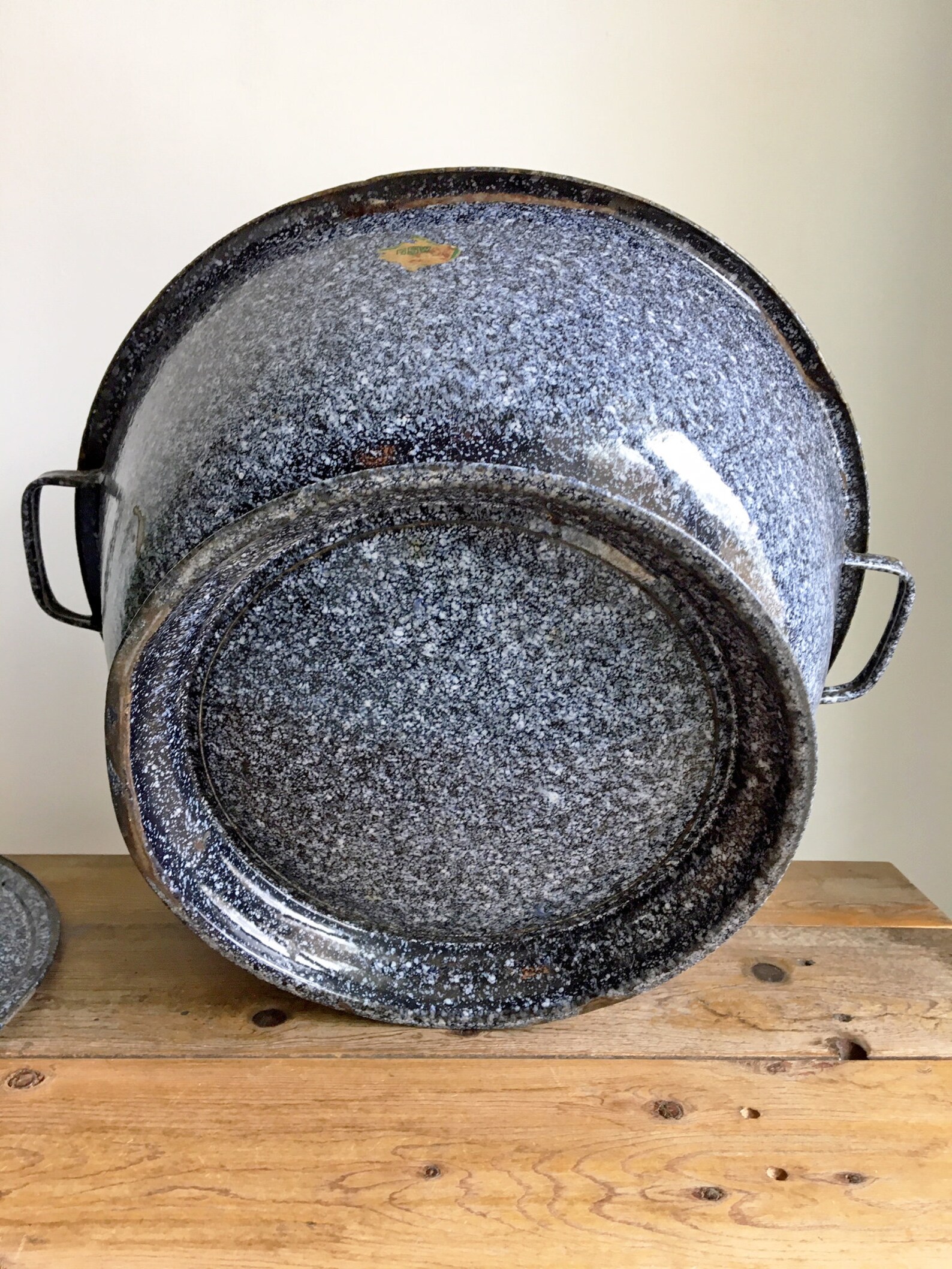
Large Enamel Bread Dough Bowl with Lid/Antique Dough Rising Etsy
Rising Bread In Stainless Steel Bowls. Rising dough in a metal bowl is probably your best option if you want your bread to rise perfectly. Stainless steel retains heat, which will help activate the yeast in your dough and provide the bread with a more even rise. You can also run a metal bowl under some hot water, dry it, and spray it with.
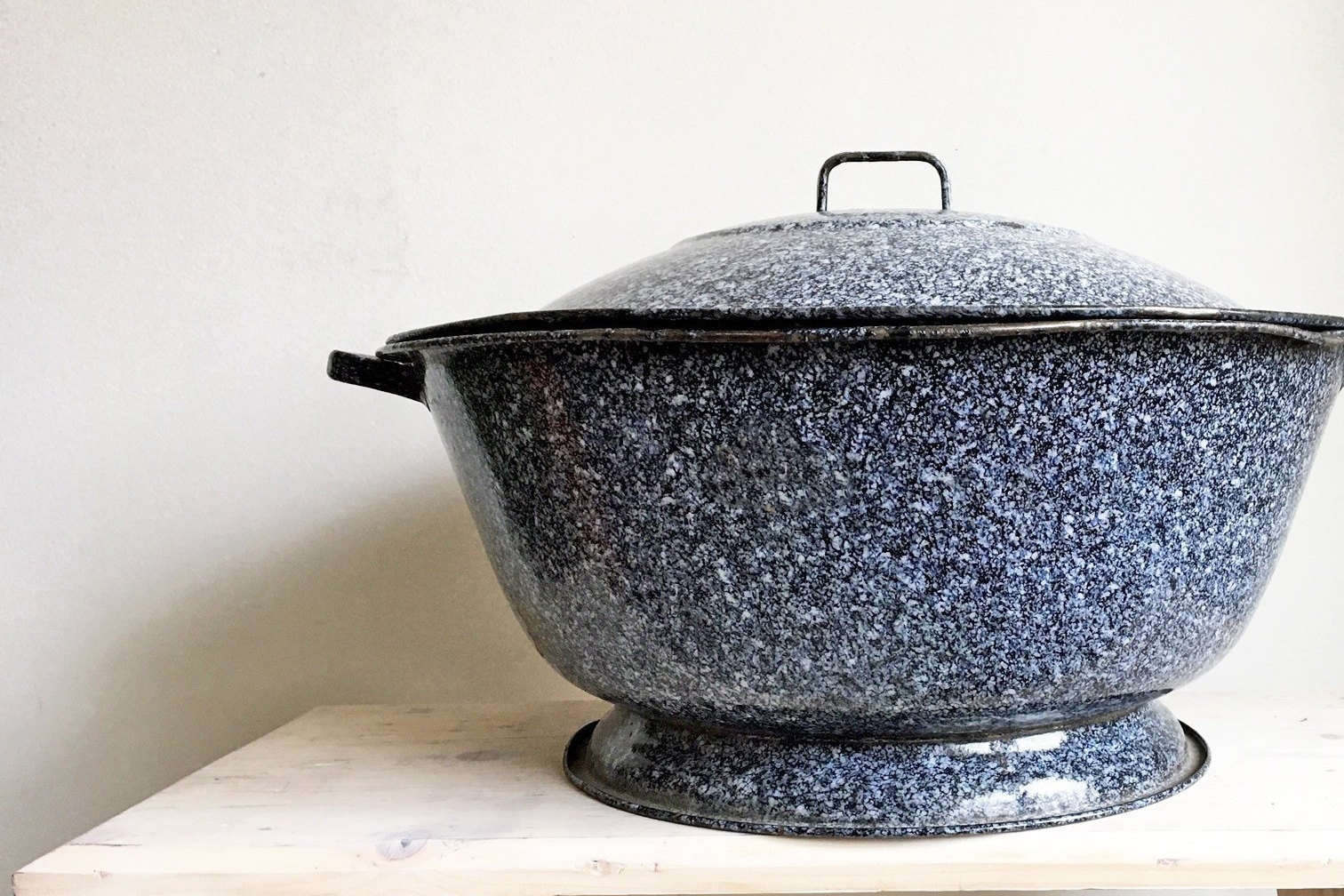
Large Enamel Bread Dough Bowl with Lid/Antique Dough Rising Etsy
The perfect container for your rising dough. Let your dough rise to new heights with this translucent container. Comes with lid and easy-grip handles. Easy to read graduated markings on the side of the bucket show volume measurements for standard bread recipes. A single-batch yeast dough, doubled, rises to the bucket's ridgeline; a bigger batch.
Antiqueaholics ANTIQUE FINDS FOR ENTERTAINING
Where to put dough to rise: your "steamed" microwave. Here's a technique savvy bakers have been using for years: Bring a couple of cups of water to a full rolling boil in your microwave oven; in my oven, this takes 3 minutes. Wait about 4 to 5 minutes (for the microwave's interior to gradually cool down some), and exchange the bowl of.

🔴 HUGE Vintage Bread Dough Rising Bowl Vented Lid with Wood Potato
Over the course of the first rise, the dough in the towel-covered bowl dropped from 78˚F to 65˚F, while the bowl with the bowl cover on it only dropped to 74˚F. While it may seem like a small difference, that larger drop in temperature means that my towel-covered dough rises much more slowly, likely resulting in an underproofed loaf with a.

Doughrising bowl DELÍCIA ¤ 26 cm YouTube
Superline dough bowl 5,0 L white/blue , Perfect for dough: lid lifts automatically , Color: white / blue , Dishwasher safe , Refrigerator safe , Made in Germany , Volume: 5000ml , Material: plastic Size: Length: 28.5 cm Width: 28.5 cm Height: 14.5 cm Emsa article number: 2143501200 , Pack contains:1 Emsa Bowl 1 Emsa Lid

Bread Dough Rising in a Bowl Stock Photo Image of making, bowl 42391386
10" Round Bread Banneton Proofing Basket for Sourdough, Rising Dough Baking Bowl Kit, Gifts for Artisan Bread Making Starter, Includes Linen Liner, Metal Dough Scraper, Scoring Lame & Case, 5 Blades. 4.6 out of 5 stars 1,149. Save 15%. $21.99 $ 21. 99. Typical: $25.99 $25.99.

Dough rising in a bowl stock photo. Image of fruit, raisins 25923768
Plastic and stainless steel bowls retain heat the best and allow for a slightly faster proof whilst tall plastic dough-rising buckets are best for knowing when the dough has doubled in size. Remember that dough will be able to rise in plastic, stainless steel, ceramic, glass, or even wooden bowls. With that said, it doesn't really matter a.
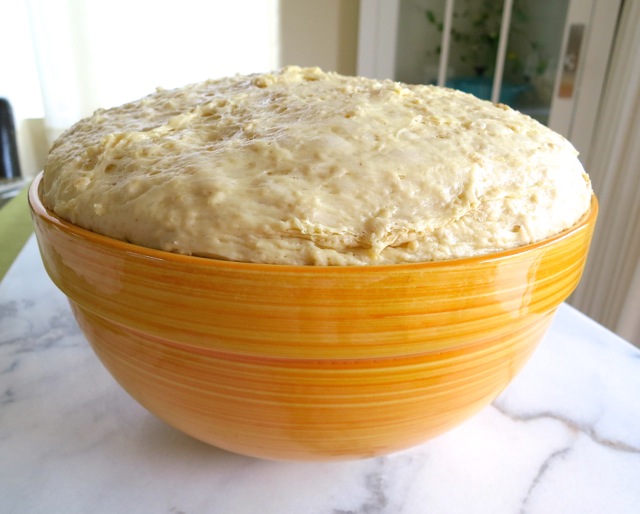
Simply Sensational Cinnamon Rolls My Lilikoi KitchenMy Lilikoi Kitchen
How to make and bake pizza dough. First, proof the yeast by mixing the water, sugar, and yeast in a bowl. Next, pour in the olive oil, flour, and salt. Use a dough hook attachment on medium speed for about 6-7 minutes. Pour the dough onto a floured surface and knead the dough for another 2-3 minutes, stretching and shaping the dough into a ball.